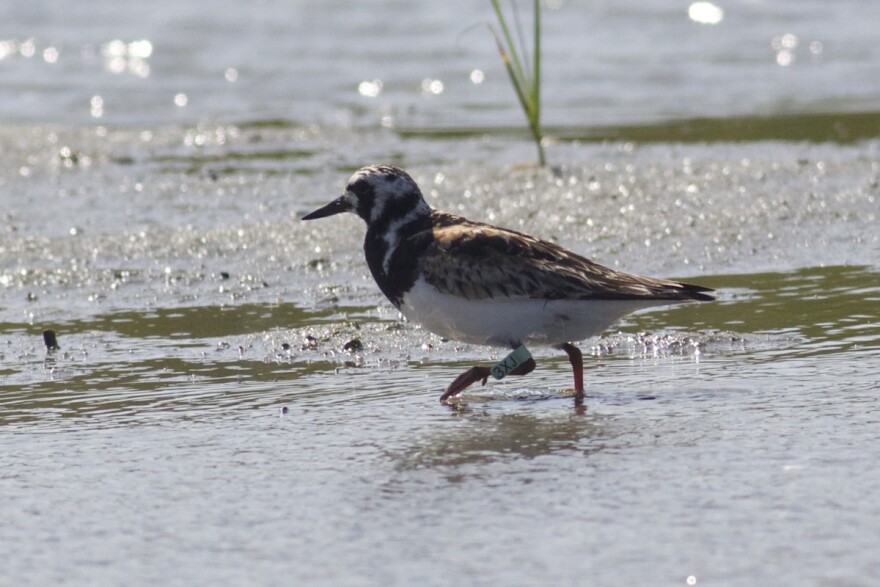Most of you would agree that shorebirds are inherently beautiful – these graceful and delicate, long-winged beach sprites arrayed in subtly beautiful earth tones, often splashed with brighter orange or red, are not in need of further adornment.
But if you look closely at enough shorebirds this time of year, you will invariably see some sporting jewelry – bird bling, if you will. These birds aren’t trying to aesthetically outshine their peers, they are individuals who have been captured and marked for research, and you can help by reporting them.
Ornithologists are studying shorebirds for various reasons, typically because of concern over declining populations and a lack of information about where the birds stop during migration or spend the winter. They use many methods to study them, including expensive satellite tags and logistically difficult monitoring of their mosquito-draped tundra breeding sites. But perhaps the easiest and cheapest way to study their movements is by capturing them and affixing field-readable bands or flags to their legs, thus taking advantage of the many birders haunting the mudflats this time of year with their high powered optics and telephoto lenses. Sometimes binoculars are all you need to read these codes and identify the individual birds.
The two species you will most often encounter sporting bands around here are the Red Knot and the American Oystercatcher. Lesser numbers of Piping Plovers, Sanderlings, Short-billed Dowitchers, Semipalmated Sandpipers, and Ruddy Turnstones are banded as well. In fact, a Ruddy Turnstone I encountered while leading a birding trip to Mass Audubon’s Tern Island in Chatham last week wore a lime green flag with the code 3XJ. Thanks to the banded shorebird clearinghouse bandedbirds.org, I was able to look up this turnstone and learn that he was banded in the spring of 2014 at Mispillion Harbor in Delaware, where he’s frequently been resighted over the last four years, always during the last two weeks of May. This is the critical window when Mr. 3XJ and thousands of other shorebirds are fattening up on horseshoe crab eggs ahead of their return to their high Arctic breeding grounds. Researchers trap and band many hundreds of shorebirds at this site to study their body condition and track their movements around the globe. Satisfyingly, ours is the only fall migration sighting of this particular Ruddy Turnstone as well as the only one away from Delaware.
Most of the flagged shorebirds I have seen on the Cape have been Red Knots, and with good reason. Populations of this impressive globe-trotting dumpling of a bird have plummeted in the last 30 years, prompting researchers to study them intensively. A scan of a flock of knots will almost always reveal multiple flagged birds. Most have been captured in Delaware or New Jersey during the aforementioned spring trapping, while others were trapped by USFWS researchers right here in Chatham in late summer and fall. Because these birds span the western hemisphere from top to bottom each year, a check on an individual’s sighting history on the website might take you to Canada’s Hudson Bay or to Chile – these guys get around. A Semipalmated Sandpiper that I found and photographed at Wellfleet Bay sanctuary a few years ago had been originally banded in Brazil, where many of them spend the winter.
So next time you encounter a flock of seemingly identical Sanderlings chasing the waves on an ocean beach, or Semipalmated Sandpipers probing the marsh mud out on the flats, keep an eye out for a little green flag or other extra adornment and see if you can read the code – a little checking may reveal that the humble little gray bird before you actually leads a life of exotic international travel most of us daydream about.








